I’m a big fan of outsourcing. Outsourcing saves time and energy, and it lets me focus on the most important areas of my business and what I enjoy working on most.
The Low Hanging System was designed as a means of earning income without any upfront costs, and you totally can DIY everything. But if you’d like some assistance here and there, especially when it comes to creating new designs, having a graphic designer on your team can be a HUGE asset.
Achieving success with LHS is largely a numbers game. The more designs you have, the more likely you are to make sales. Not everyone’s an artist, though (I’m certainly not!), and not everyone wants to undergo the process of creating new designs themselves.
If you fall into either one of these two camps, you can find tons of great graphic designers to work with online.
In order for outsourcing to be effective, however, you need to…
- find all-star people
- establish an efficient and productive work relationship
…otherwise, outsourcing will cause more trouble than it’s worth.
Below, I talk about a whole bunch of tips and guidelines about how to optimize your experiences with outsourcing, including which sites to use to find the best people and how to convey your needs and get awesome results without a lot of back-and-forth or misunderstandings.
Let’s dive in…
Where to find the best graphic designers
First things first. You need to find the best outsourcers for the job. But where should you look? There are a variety of websites that can help with your outsourcing needs, many of which feature talented and reliable graphic designers.
Last year, I wrote a detailed blog post covering some of my favorite outsourcing sites. The post goes over where you can find both graphic designers and high-quality virtual assistants.
I’ve used some of the sites I talk about in that post before, but I do also include a couple that I haven’t personally tried (Premier VEBA and Call Arup), although they come highly recommended.
Below, you’ll find a list of four websites you can use specifically to find graphic designers:
Upwork 
OnlineJobs.PH
Premier VEBA
Call Arup
How to list your needs/convey what you need
To optimize your outsourcing experience, the best thing you can do is to be as clear as possible upfront. And doing so requires you to have a solid understanding of your own goals and what you hope to get out of the relationship.
You also need to figure out what you value most and communicate that to outsourcers. For example, you may decide that having a fast turn-around time is more important to you than getting something super high-quality (or vice versa).
Additionally, whenever possible, you want to communicate with clearly defined metrics, including specific quantities and deadlines. Here are a few examples:
- I need ten unique designs in one week.
- I want to have one new design made in two different sizes: 1500X1500 and 1200X900 pixels.
- I expect questions and comments to be responded to within 24 hours.
When working with an outsourcer, you need to go over what you both expect in terms of the outsourcer’s responsibilities, turn-around time, communication style, and updates. You need to make sure the following is clear at the start of a project:
- an outline of the work to be done, including what you plan to do with the final product(s)
- your target audience
- aesthetic preferences (e.g. color scheme, messaging, tone, and style)
- a list of any specific copy or images you want included in the project
- any important points of contact besides yourself if assistance is needed
- project timeline, including milestones
- project budget
- preferred method of communication (e.g. email, text, phone, Skype)
- communication expectations (e.g. how often you expect responses and updates)
As you’re figuring all this out with your outsourcer, make sure the conversation is two-way. You want your work relationship to be a win-win.
Also, as you detail the work you want done, here are some tips to eliminate a lot of back-and-forth and revisions:
- Strike a balance between being specific and giving outsources room to be creative. You don’t want to be too vague or leave things too open-ended, but you do want your outsourcers to be able to take some creative liberties.
- Remember, outsourcers aren’t mind-readers. Don’t use vague language. Spell out what you mean or are referring to. The clearer you are, the fewer back-and-forths you’ll have.
- Think of what questions your outsourcer might have for you and preemptively address those points.
- When communicating over email, don’t write huge paragraphs of text. They’re hard to read and points get missed. Instead, use bullet points or make important points bold or a different color font.
And on another note about communication, you want to work with someone who communicates well and regularly updates you about their progress. For example, someone who takes a week to respond to a question or feedback isn’t going to be an ideal outsourcer.
You should take time zones and work-scheduling preferences into consideration as well. For instance, you or your outsourcer may want to establish a no-communication-over-the-weekend policy if that’s important to you. Or, you may want to limit communication to regular 9-5 business hours in your timezone.
What to expect to pay
What you pay outsourcers, of course, varies depending on the details of your project. But here are some guidelines:
The most important rule I go by is making sure I can get 2-10X ROI from whomever I hire. I don’t try to get bottom-dollar rates with outsourcers. I want to work with amazing people and pay them fairly.
I don’t recommend having a mindset of wanting to squeeze people for everything they’re worth. Just make sure you can get a good return on your investment.
To figure out how much to pay people, I recommend looking at the market price. Visit job sites, like Indeed and Monster, and see how much people generally pay for certain jobs.
Graphic designer
According to Upwork, graphic designer rates range from $20 to $150 an hour. The average rate is around $45. Not all designers bill hourly, however. And I’d actually recommend paying per project if you can (more on that below).
Virtual assistant
At some point, you may also decide to work with a virtual assistant to help with miscellaneous LHS-related tasks, such as customer support, social media, scheduling appointments, etc. VA rates typically range from $10-$25 an hour. There are also services like MyFancyHands.com that can help with your virtual assistant needs. I wrote about this service in a blog post a few years back. You can check it out here.
How to handle payments
Whenever possible, I pay people on a task basis as opposed to hourly or salary. I find that paying people per project reduces the temptation to milk assignments, and tasks get done more quickly as a result.
Plus, you don’t end up feeling slighted. You may sometimes think a task takes X amount of time to do, but in reality, it takes longer. Or a particular outsourcer may genuinely take more time.
Paying people on a task basis also helps you budget better. Again, you might think a task should take X amount of time, but if a task ends up taking longer, you can end up spending way more than what you initially planned if you pay people hourly.
After working with an outsourcer for a while, though, you can always switch to paying them a salary. For example, you might budget for paying to work with a designer for 20 hours a month and then come up with a fair hourly rate.
The outsourcing platforms I mentioned earlier have ways of helping you handle making payments. Here is the payment information from those platforms:
Upwork
If you use Upwork, you have the option to pay people hourly or per project (recommended). For fixed-price jobs, you can use Upwork’s licensed escrow service, which delivers payment to outsourcers once predetermined milestones are hit.
You can make your payments by credit card (MasterCard, Visa, American Express, Discover) or via PayPal.
NOTE: There’s usually a 3% processing fee on most payments.
Upwork also lets you access invoices and transaction history.
You can learn more about Upwork’s payment system here.
OnlineJobs.ph
With this website, you manage your outsourced jobs using TimeProof software, which tracks outsourcers’ time and shows screenshots of work time. You make payments through either PayPal or Payoneer once your outsourcer has worked for a week.
You can learn more about making payments with OnlineJobs.ph here (scroll to step 3).
Premier VEBA and Call Arup
Neither of these two sites gets super specific about how payments are handled, and since I haven’t used either one, I can’t weigh in about my personal experiences.
On its FAQ page, Premier VEBA just says “pricing is assessed independently and assigned to each individual project.” And Call Arup says you can monitor hours charged/worked by logging into its portal, and the hourly rate charged is the same for all types of tasks. You can read more of Call Arup’s FAQ here.
Working with outsourcers independently
If you don’t use an outsourcing platform, the easiest way to handle payments is through PayPal, which lets you link your credit card or bank account so you never have to worry about running out of funds.
PayPal is available in 202 countries (see the full list here) and supports the following 25 currencies:
Here is some information about the transfer and conversion fees PayPal charges:
This is the link referenced in the screenshot.
When I work with outsourcers independent of outsourcing platforms, I typically don’t pay people up front, especially if I’ve never worked with them before.
I will do milestone work, however. To do this, both you and your outsourcer should agree on milestones together. For example, say you want 20 new designs done in 2 weeks.
The first milestone can be the first 5 designs done in 3 days. The second milestone can be 10 designs done in 7 days. The third milestone can be 15 designs done in 10 days, or however the two of you want to break up the task, just as long as you both agree upfront on the milestones and how much you’ll pay the outsourcer after completing each milestone.
How to vet the applicants
Include a qualifier
I’m a big fan of using qualifiers to vet outsourcers. At the bottom of my job descriptions, I instruct applicants to include the phrase “purple cow” at the top of their cover letters. This way, I can see who bothered to read the entire job description and who can follow directions.
You’d be surprised how many people this qualifier weeds out right off the bat.
Ask for samples or trial work
When you’re looking to hire a new designer, you should always ask to see samples of people’s work. Even if they’re good and highly rated, their style may not jive with what you’re looking for. And it’s better to find this out before you hire them.
It can also be beneficial to work with people on a trial basis. You can tell people you want to hire them to create just 1-5 designs to start, to make sure it’s a good fit. Then, if everything goes well, you can hire them on a longer-term basis.
How to communicate with outsourcers
This is largely a matter of personal preference. Some people like having weekly check-in meetings over Skype, while I typically prefer keeping my communication over email.
Depending on the nature of the correspondence (and your outsourcer’s language ability), I often make Jing videos to communicate my needs. I find this to be especially useful when I want to show examples of what I’m looking for or to demonstrate a quick walk-through of the task I want done.
I often send screenshot videos of typing keywords into Google’s image search and then scrolling through the results, making comments about what I like or don’t like about various examples.
If you decide to make videos, here are a few tips:
- Be mindful of the speed with which you speak.
- Use clear, direct language – outsourcers aren’t mind-readers.
- Be especially mindful of the first two points if your outsourcers aren’t native English speakers.
- Stay on point, don’t ramble, jot down a few notes or key points you want to mention beforehand if you need to.
- Keep the videos short and sweet.
Another thing I like to do to make sure everything flows nicely is to have outsourcers answer the following three questions every day (or however often makes sense depending on your project and needs):
- What did you accomplish today?
- What obstacles or challenges did you face?
- What questions do you have for me?
It’s a good idea to touch base and establish a supportive environment that allows people to feel safe to ask questions, voice concerns, and feel comfortable working with you. Your conversations with outsourcers should always be two-way.
How to handle common problems
If you take care in the beginning and hire awesome people, you probably won’t encounter too many issues. But just in case…
If someone stops working mid-project
No matter the issue, as a first step, always talk to the outsourcer and try to get clear about what’s going on. You might say something like…
You normally do fabulous work, but we haven’t had the best communication lately, and I’m a bit worried and was wondering what’s going on? I hope everything’s okay. But if I don’t hear from you by [date], I have to assume that either something happened or you’re no longer interested in this project. And if you’re no longer interested, I have to stop the project and give it to someone else. Please let me know if you’re okay.
Unless this type of behavior is totally out of character, it’s probably best to just move on if you don’t hear back within 24 hours.
If the outsourcer does get back to you and they have a good reason for not continuing to work, you can work together to come up with a new arrangement. You can ask…
What do you think is a reasonable amount of time for you to deliver [result or task]?
If an outsourcer isn’t performing well
Again, always talk to people first. The human approach is the best approach, and people are usually tougher on themselves, so approach this type of situation with kindness. You can say…
I noticed that you agreed to get [task] done by [date], but I see that [it hasn’t been finished yet or it hasn’t been performed to our agreed upon standards]. Did something happen that we hadn’t initially thought of or discussed that’s causing a [delay or problem]?
The outsourcer will most likely either admit fault or offer an excuse or reason…
- If they admit fault, come up with a new agreement together and always operate under the assumption that there’s a win-win solution to be found.
- If they have an excuse, such as something going on in their personal life, ask them what they think the best course of action would be. You can say…
I know your situation must be challenging. So let me ask you, what do you think is the best course of action so that both our needs can be met?
I find that people are rarely totally unreasonable and if you just talk to them and treat them the way you’d want to be treated, you can come up with a solution that benefits you both.
Some signs you may need to end the working relationship
Sometimes, things just don’t work out. Here are a few of those situations:
- If there’s a pattern of work not getting done on time, directions not being followed, or work being completed subpar
- If an outsourcer doesn’t have the best attitude and it’s affecting you or other people on your team
- If you aren’t getting a good ROI from the relationship
If you need to end a work relationship, do it with kindness. You never know what’s going on in someone’s life that they may not be sharing.
As we talked about earlier, you should be clear with your outsourcers from the get-go about your expectations, deadlines, and milestones. Then, if their performance starts to slide in any way, you should communicate with them to see what’s going on and try to come up with mutually beneficial adjustments.
But, if after doing these things, the relationship still isn’t working, your position should hopefully be understandable so the two of you can part ways on good terms.
Contracts and NDAs
I normally don’t use contracts or non-disclosure agreements with my designers. Often, the people you work with are going to be overseas. So, in that case, I’m not sure how enforceable NDAs and other contracts would end up being.
But if it’s something you feel is important and would like to explore more, I’ve included links to a few resources below:
I really hope you find these outsourcing guidelines useful! If you have any other tips that you can share, please leave a comment below. Also, if you liked this post, please consider sharing it with your friends and followers.



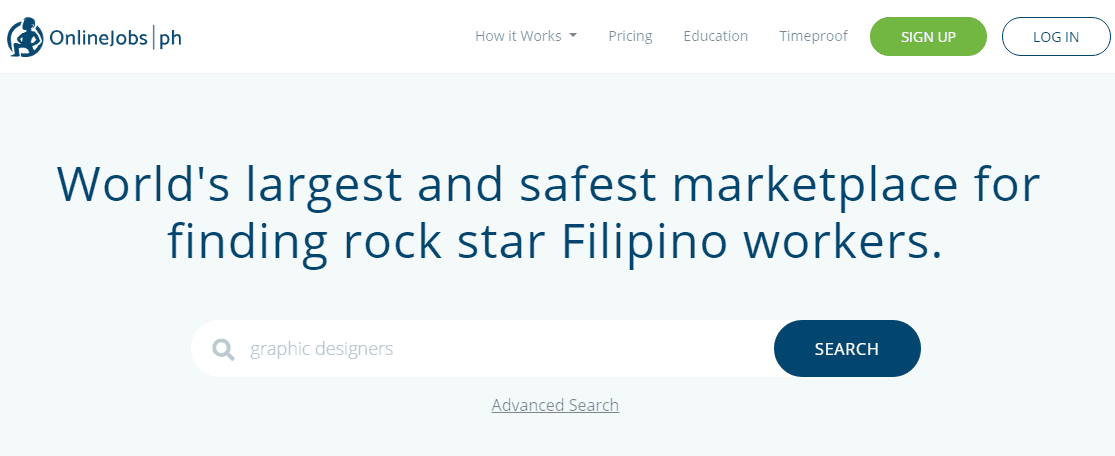
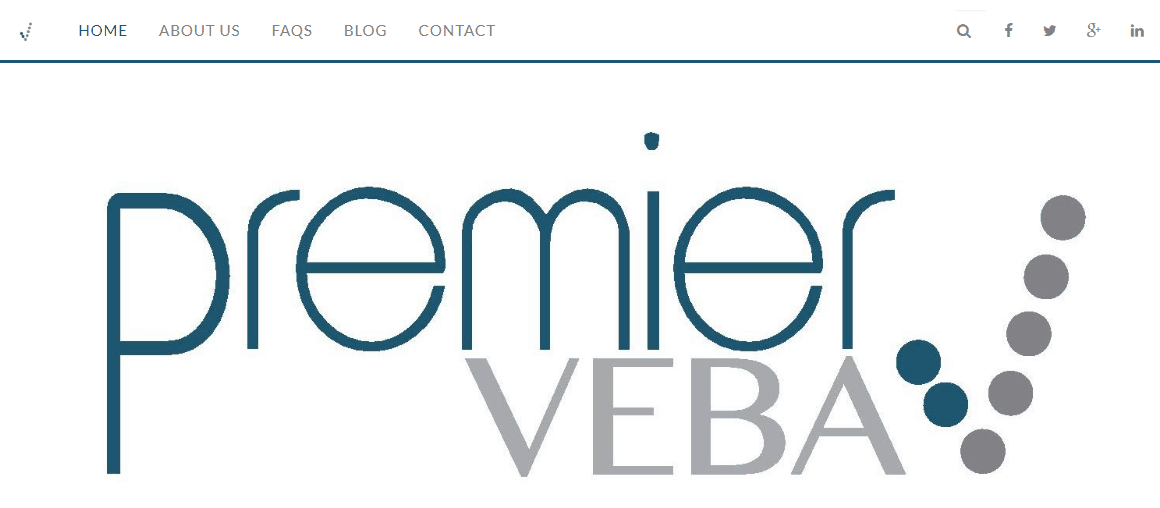
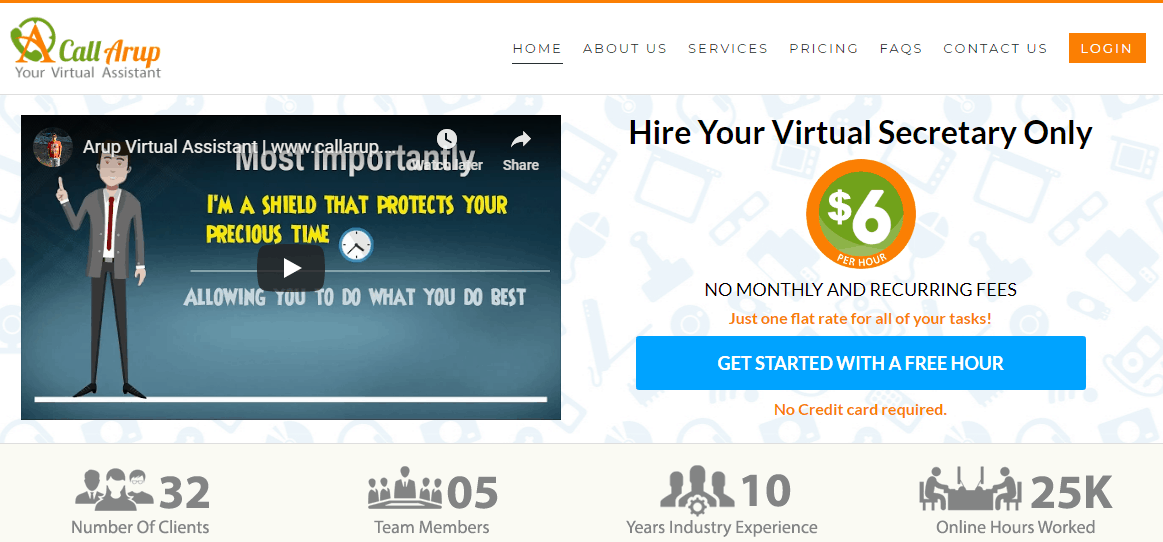

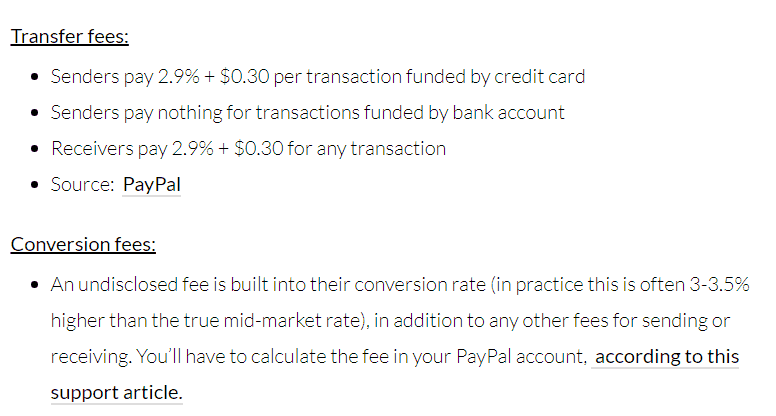
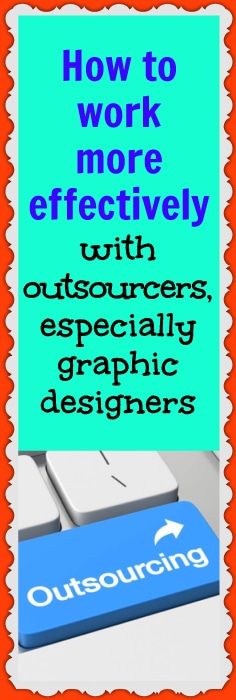



0 thoughts on “How to work more effectively with outsourcers, especially graphic designers”
Very useful and practical, Rachel. Thanks!
Glad you enjoy it! Thanks!
Thank you for posting this, Rachel!